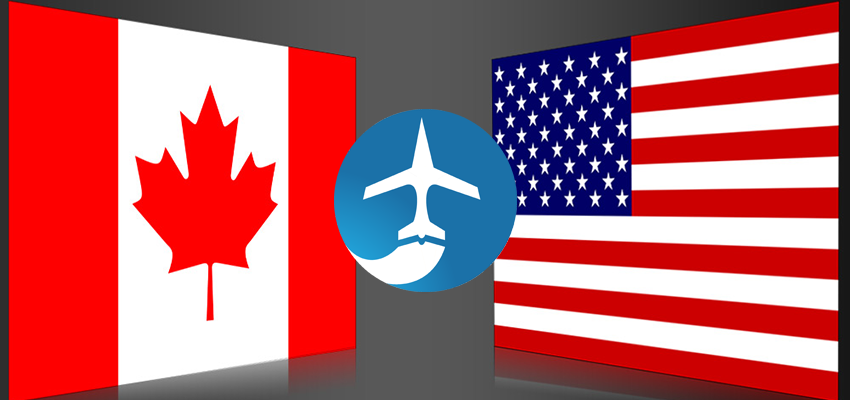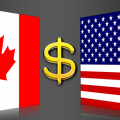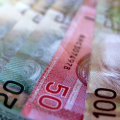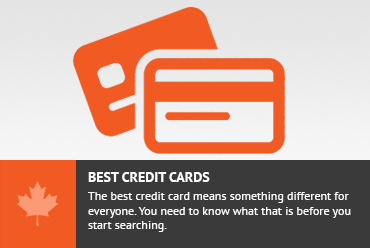This is an article in a multi part series comparing the Canadian and US credit card markets:
- Overview
- US Cards vs Canadian Cards – Reasons for the difference
- US Cards vs Canadian Cards – Airline Cards
- US cards vs Canadian Cards – Hotel Cards
- US Cards vs Canadian Cards – Cashback and Fixed Value Points Cards
For an in depth analysis download the companion excel sheet.
The Skinny
The US market tends to be more competitive in the airline miles type of cards
- Many loyalty programs priced in USD
- Aeroplan has a monopoly on loyalty space in Canada
- Airfare is more expensive in Canada, increasing value of frequent flyer miles
| Canadian Cards | US Cards | |
|---|---|---|
| Base Earnings | 1x | 1x |
| Bonus Multipliers | 1.25x | 2x |
| Travel Benefits | No real standard | Standard benefits: Free Checked Bags, Priority Boarding |
| Sign Up Bonus Standard | 25K | 50K |
Overview
It seems that in the Frequent Flyer and Hotel points categories are where the largest differences exist between the US and Canadian cards.
In general, there are more banks in the US fighting for card members and some of them have to get creative. I believe that the US credit card market is more competitive than in Canada and the offerings are better for the consumer, especially in the frequent flyer / airline miles category.
Something to note in this is that, a major source of this is the what I believe is a poor offering that the Aeroplan cards have recently offered to Canadians. I believe this card’s success, in spite of a very weak value proposition to consumers, has really allowed the bar to be lowered in Canada.
Reasons for the Competitiveness of US Market
I have a few theories on why this category, in particular is noticeably more competitive in the US than in Canada for credit cards. These are purely my thoughts as a consumer. I have no additional insider information on the issue.
Loyalty points priced in USD
In general, loyalty programs try to have a value relatively close to 1000 pts = $10, or “a penny a point”. There are only a handful of airlines that would price their loyalty programs in CAD. Most would maintain that penny as a US penny.
Generally credit card programs reward frequent flyer miles based on the amount spent. In Canada, that would be the amount spent in CAD. Assuming that the loyalty program points being rewarded are priced in USD, that could cause a mismatch in the liabilities. (Imagine their books if the US dollar became worth 3 or 4 times the Canadian dollar? )
Due to this potential exchange risk, the Canadian programs are much more likely to be cautious and reward fewer miles per Canadian dollar than their US counterparts award per US dollar.
Frequent Flyer loyalty is evenly split in US, but concentrated with Aeroplan in Canada
Another issue, is that there are more than 3 major national airlines with loyalty programs that can have a variable value. In Canada, there is really only Air Canada that has a loyalty program. Westjet’s program is truly a fixed rebate for travel. As a result, the American loyalty programs have to be more flexible in their relationships with the banks / credit cards to ensure they remain competitive. In Canada, Aeroplan really has the ability to call the shots with their credit card affiliates and can offer much less since it is desired more.
Airfare in Canada is more expensive
Another issue that I find is the case is that airfare is generally much more expensive in Canada than in the US. A flight from Toronto to Calgary is pretty much in the C$600 range. I would think a flight from Boston to San Francisco is more like US$400. In my experience, these prices are quite steady independent of exchange rates.
Since the fares are so much higher in Canada, there is much more incentive for the average person to understand and try to use their loyalty program points to offset their airfare. In the US, a 25K roundtrip flight would offset less cost than a relatively equivalent Canadian flight.
With more consumers interested in understanding these programs, or at least feeling the pain point that these frequent flyer programs help solve, the consumers are willing to take an inferior product as compared to what they might otherwise fight for.
Cards compared
To ensure that a fair comparison is done, it is good practice to note which programs would be useful for comparison.
Aeroplan is a zone based program and the equivalent counterparts in the US would be United MileagePlus, American AAdvantage or Delta Skymiles. These are all the national carriers with major international routes. Their loyalty programs are also similarly structured as the redemptions are almost completely independent of the revenue fare offered.
Westjet and Southwest would probably line up against each other. They are both purely revenue based programs, where Southwest rapid rewards and Westjet Dollars each have exact values towards flights and it is not possible to ever get outsized value from either program. They also represent similar style airlines which focus mainly on domestic flights with small international footprints, mostly to sun destinations.
Alaska Airlines represents a regional airline in both Canada and the US. Since there is a card in Canada and the US, I think these 2 cards should compare to each other.
Rewards
In terms of rewards, the standard in the industry is 1 mile / $ spent for base earnings. This is the same for both Canada and the US.
With valuations of points in the range of 1 cent to 2 cents, this gives a reasonable rebate of between 1% and 2% on all spending.
Multipliers
The big difference on the earning side between Canada and the US is in the earning multipliers for spending in bonus categories. In Canada the bonuses earn 1.25x – 1.5x the base earnings, in general. In the case of the TD Aeroplan card, the bonus is not even paid on purchases with Air Canada.
In the US, almost definitely, spending with the airline gets double miles.
The US philosophy of paying reasonable bonuses for purchases with the sponsor helps to ensure loyalty to the brand. I believe this is a better approach than the TD Aeroplan card’s.
Engagement Rewards
Something that I find exists with the US cards, but not with the Canadian cards is what I call “engagement rewards” that basically reward you for staying engaged. For example, the American Airlines cards offer a 10% refund of miles used in the year, the United card rewards the cardholder with an extra 10,000 miles after spending $25,000 in a year on the card.
The only equivalent card in Canada that has something like this is the American Express AeroplanPlus card. This card offers 1.25 Aeroplan miles for every dollar spent above $10,000 in a year. That is a bonus of .25 Aeroplan miles for every dollar above the threshold.
Benefits for Having the Card
In the US, the standard benefits tend to apply to all flights the cardholder takes with the airline. The benefits tend to partially replicate the lowest form of status with that airline, including:
- Free first checked bag on all flights, for cardmember and companions
- Priority Boarding
I find that in Canada the flying benefits simply are not there. The TD Aeroplan makes a weak attempt at providing these benefits but only on award travel. The free bags, priority boarding and annual lounge passes are offered only on Aeroplan award tickets. The bag benefit is also limited to 1 bag and limited to the cardholder.
The RBC Westjet card does provide free bags to the cardholder and companions, so that is more in line with what is happening in the US.
The US version of the Alaska Air card offers free bags but the Canadian one does not.
Sign Up Bonuses
I also find that the sign up bonuses in the US tend to be more generous than in Canada. While the public ones on the bank websites tend to be in the 30K – 40K range, quick google searches will show the standard in the US tends to be 50K airline miles for an airline card sign up.
In Canada, 50K is unheard of. The standard in Canada tends to be closer to 25K. I have not seen many links out there where it is possible to get more than 30K in a sign up bonus. The public link for the TD Aeroplan is actually 15K, which would be laughed at in the US.
Annual Fees
The annual fees is another place where the US cards are cheaper than in Canada (in local currencies). The standard fees for this level of card in the US is $95 with a first year free. In Canada, it seems that the standard is closer to $120 with or without a first year fee waiver.
My personal experience has been that in the US, getting an annual fee waived is about 50/50 venture. Sometimes you get it and sometimes you don’t. In Canada, my experience is that I always get shut down when I ask, and I am forced to close the card. This is another aspect where the consumer has better options in the US.
The other interesting thing that I have noted is the presence of an authorized user fee. In Canada a few cards have the authorized user fee while in the US, it is almost always free. More often than not, there are actually bonus points awarded just for adding an authorized user.
Conclusion
In general, the US cards tend to be much more competitive than Canadian cards in the airline miles category.
Base earnings tend to be similar with Canadian and US cards, but the US products tend to offer better sign up bonuses, travel benefits and bonus earnings.











I can confirm that the US cards are a better value than those offered in Canada.I have an Alaska Airlines MNBA World Elite card. I have written them a couple of times re the difference in checked baggage benefits between their US and Canadian customers. Their last response suggested it is the banks fault for not paying them the (a) fee so I should take my concerns to them. Really? My hope was that they offer themselves as an advocate and take my concerns to whomever they deal with. I fully expect them to write me off as a kook and they will consider the matter closed (as they did with my first attempt). I tried to point out to them that Westjet’s free baggage offer is done through Mastercard so why can’t they negotiate the same deal with their Mastercard partner? Alaska should be smart enough to point out to the bank that this Canadian card when used in the US is very lucrative. We get charged not only an inflated exchange rate but a 2.5% foreign transaction fee.
In summary I’m impressed with Alaska’s operational staff but as for their management not so much.
Unfortunately it is not Alaska but the banks in Canada and the US. The Canadian credit card market is not as competitive so the Canadian banks dont buy as many services from the airlines as the US banks do. In the US the banks simply pay more to the carriers for more service. It is like the US banks are buying business class and the Canadian banks are buying economy to give to their cardholders.
Unfortunately that is the way it is. It is not Alaska Airlines fault.